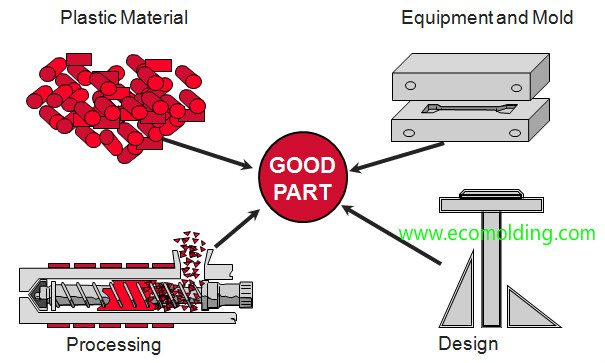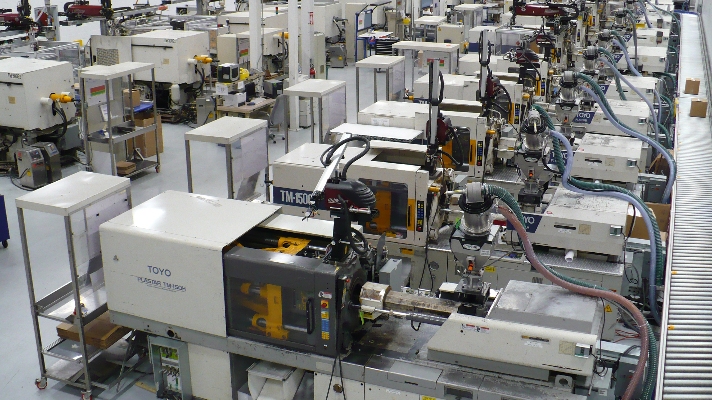The Advantages of Using Plastic Injection Molding for Custom-made Parts Manufacturing
Understanding the Essentials of Plastic Injection Molding Processes
Plastic shot molding serves as a cornerstone of modern production, providing a methodical method to producing intricate elements with precision. Exploring these essential components can disclose just how even small changes can lead to considerable enhancements in production outcomes, elevating inquiries regarding the potential for development in this established procedure.
What Is Plastic Injection Molding?
Plastic shot molding is a commonly made use of production process that transforms polycarbonate and thermosetting materials right into precise and complicated forms. This strategy is favored for its ability to produce high quantities of identical parts with remarkable precision, making it an important technique in numerous sectors, consisting of auto, durable goods, and clinical gadgets.
The procedure includes thawing the chosen plastic product and injecting it into a mold under high pressure. The mold, created to the requirements of the preferred part, allows the molten plastic to materialize as it strengthens and cools. As soon as the product has hardened, the mold and mildew is opened, and the ended up component is expelled.
Plastic injection molding offers numerous benefits, consisting of decreased waste, consistency in production, and the capacity to incorporate intricate layouts that may be testing with various other manufacturing methods. Furthermore, it sustains a wide range of materials, each providing distinct residential or commercial properties that can be tailored for details applications. As markets continue to innovate, plastic injection molding remains at the forefront, allowing the advancement of innovative products that meet evolving consumer demands.
The Shot Molding Process
The shot molding procedure is an innovative method that entails numerous vital phases to generate top notch plastic components. At first, plastic pellets are fed into a heated barrel where they are thawed into a thick fluid. This molten plastic is then injected under high stress into a precision-engineered mold and mildew, which shapes the material right into the wanted form.
As soon as the mold and mildew is filled, the plastic is allowed to strengthen and cool, taking the form of the mold and mildew tooth cavity. Cooling time is essential, as it affects the cycle time and the final residential or commercial properties of the shaped part. After sufficient air conditioning, the mold and mildew opens, and the completed element is ejected utilizing ejector pins.

Materials Made Use Of in Shot Molding
Numerous products can be utilized in the injection molding process, each offering distinct buildings that deal with details applications. One of the most commonly used products include thermoplastics, thermosetting plastics, and elastomers.

Thermosetting plastics, like epoxy and phenolic materials, go through a chemical adjustment during the treating procedure, leading to an inflexible, inflexible structure. These products are optimal for applications calling for high heat resistance and architectural stability, usually made use of in automobile components and electric insulators.
Elastomers, including silicone and rubber-based products, give flexibility and durability. Their special homes make them ideal for applications that require flexibility, such as seals and gaskets.
In addition, specialty click this materials like bio-based plastics and composites are obtaining traction for their ecological advantages and boosted performance attributes, widening the webpage extent of injection molding applications in numerous sectors. Comprehending the buildings of these products is important for choosing the ideal kind for details tasks.
Advantages of Injection Molding
Injection molding stands apart as an extremely reliable manufacturing procedure that supplies numerous benefits for producing complicated components with precision. One of one of the most considerable advantages is the capacity to develop elaborate styles that would be impossible or challenging to achieve with various other techniques (Plastic Injection Molding). The procedure allows for in-depth features and limited tolerances, making sure top notch elements
Additionally, shot molding is known for its rapid manufacturing capacities, making it a suitable option for high-volume manufacturing. As soon as the mold and mildew is created, components can be created quickly, lowering lead times and raising overall performance. This efficiency not just decreases manufacturing costs yet likewise provides an affordable edge Related Site in the marketplace.
The adaptability of materials utilized in injection molding additionally enhances its charm. A variety of thermoplastics and thermosetting polymers can be employed, enabling manufacturers to pick materials that ideal meet their particular needs, consisting of adaptability, warmth, and toughness resistance.
Furthermore, the procedure reduces waste, as excess material can frequently be recycled and reused. This sustainability facet adds to a lowered environmental effect, making shot molding a liable production selection. In general, the advantages of injection molding make it a preferred method for lots of sectors.
Aspects Affecting Product High Quality
While many variables can influence product high quality in injection molding, recognizing these elements is important for attaining optimum outcomes. Secret elements consist of product choice, refining parameters, and mold design.
Material choice plays an essential duty, as various polymers show one-of-a-kind residential properties that influence flowability, toughness, and thermal security. Insufficient material choice can lead to problems such as warping or insufficient filling.
Processing specifications, including pressure, temperature, and cycle time, have to be meticulously managed. Variants in these setups can lead to disparities in part measurements and surface area coating. As an example, exceedingly heats might trigger deterioration of the polymer, while inadequate pressure can cause brief shots.
Mold layout is similarly essential, as it figures out the flow of the molten plastic and the cooling process. Inadequately developed molds may lead to irregular cooling prices, leading to dimensional inaccuracies and residual stresses.

Final Thought
Finally, plastic shot molding functions as an essential production procedure that makes it possible for the effective manufacturing of high-grade parts. Proficiency of the shot molding procedure, consisting of the understanding of products and the impact of different aspects on product quality, is important for achieving optimal results. The advantages of this approach, such as cost-effectiveness and layout versatility, additional highlight its importance across multiple markets, strengthening its condition as a preferred choice for high-volume manufacturing.
Plastic injection molding offers as a cornerstone of modern-day production, offering a systematic technique to creating complicated parts with precision.Plastic injection molding supplies numerous advantages, including lowered waste, consistency in production, and the ability to integrate elaborate styles that may be testing with other producing approaches (Plastic Injection Molding). As industries continue to introduce, plastic shot molding continues to be at the leading edge, allowing the development of innovative products that meet advancing consumer demands
The shot molding procedure is an innovative strategy that involves several key stages to generate top quality plastic elements.In final thought, plastic shot molding serves as an essential manufacturing procedure that makes it possible for the efficient manufacturing of high-quality elements.